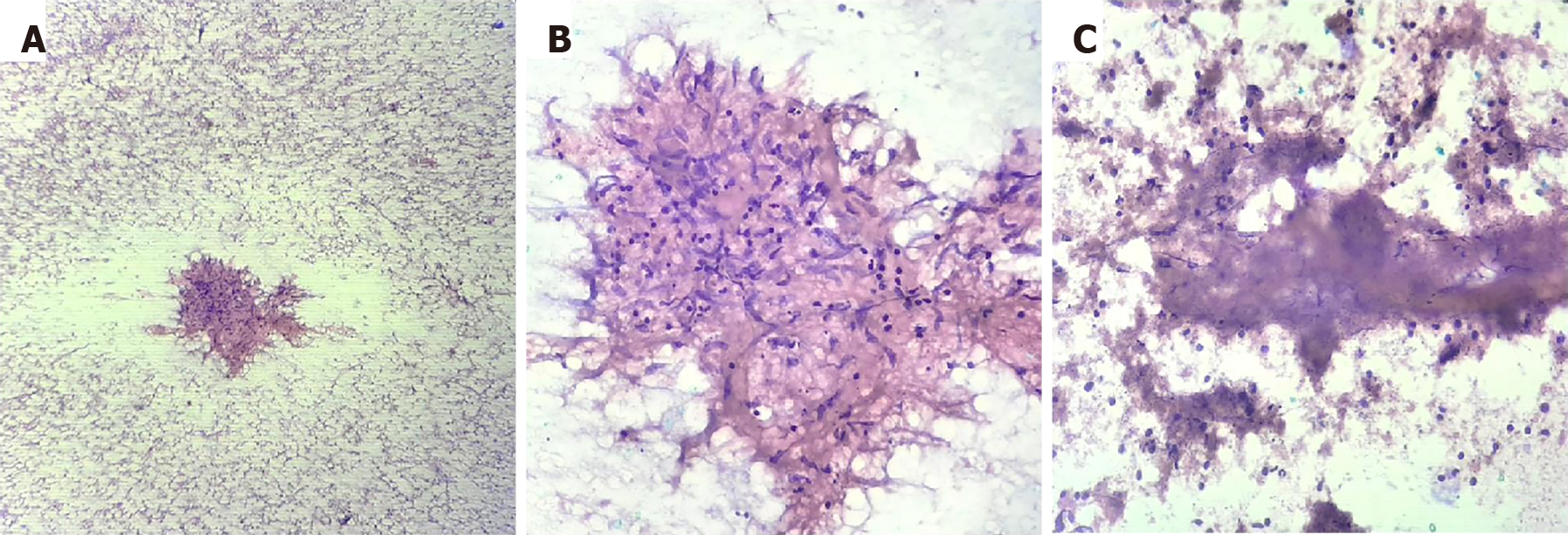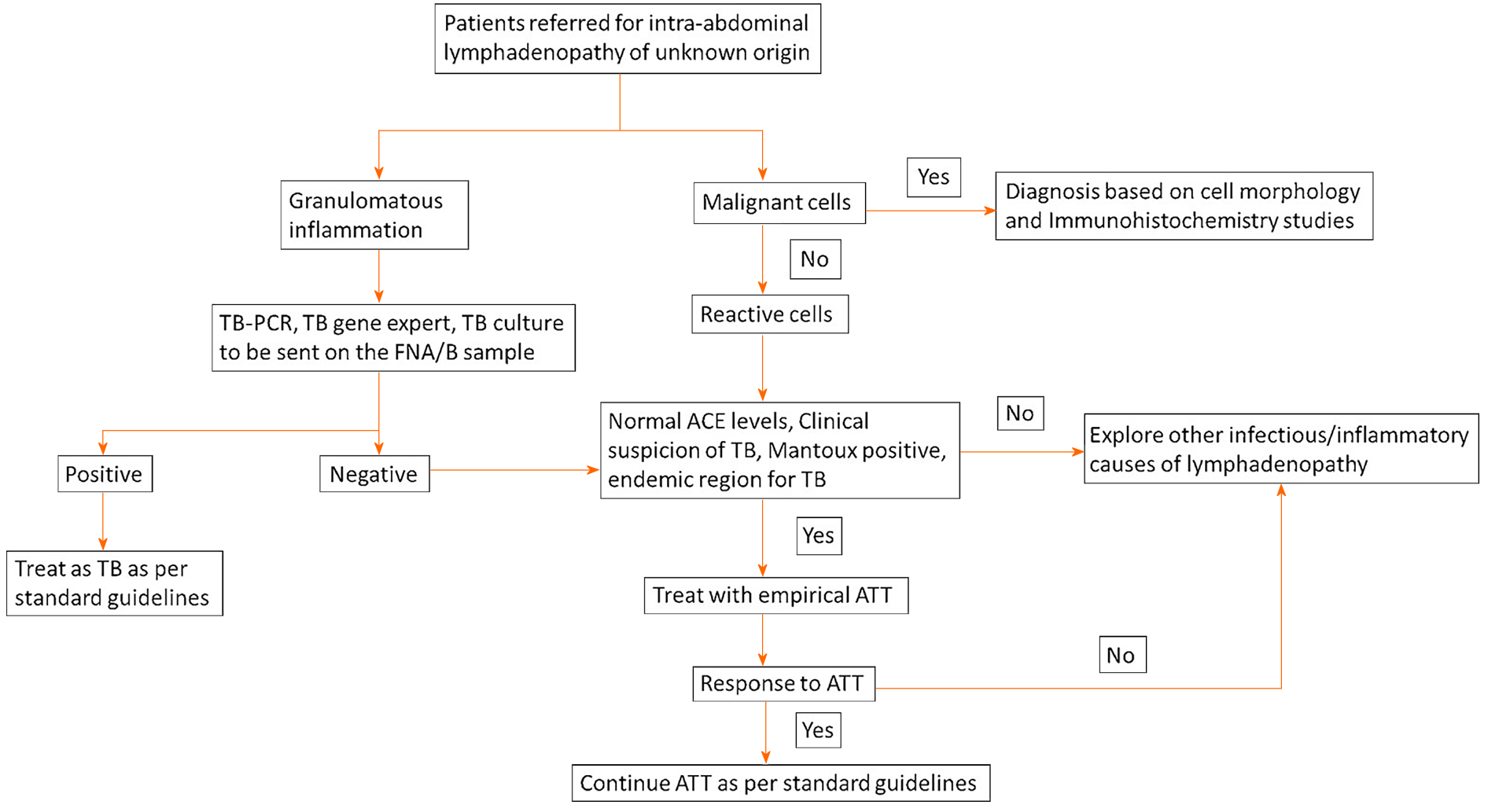Copyright
©The Author(s) 2021.
World J Gastrointest Endosc. Dec 16, 2021; 13(12): 649-658
Published online Dec 16, 2021. doi: 10.4253/wjge.v13.i12.649
Published online Dec 16, 2021. doi: 10.4253/wjge.v13.i12.649
Figure 1 Histopathology findings on the fine needle aspiration sample of a patient with tuberculosis.
A: An epithelioid cell granuloma with scattered lymphocytes and red blood cells in the background (100 ×); B: Collection of epithelioid histiocytes forming a granuloma (400 ×); C: Necrotic material and inflammatory cells (400 ×).
Figure 2 Endoscopic ultrasound.
A: Hypoechoic node due to tuberculosis (TB) as seen on endoscopic ultrasound (EUS); B: Heteroechoic node due to TB as seen on EUS; C: Typical findings of TB lymphadenitis on EUS and fine needle aspiration cytology.
Figure 3 Proposed approach to intra-abdominal lymphadenopathy in a region endemic for tuberculosis.
TB: Tuberculosis; PCR: Polymerase chain reaction; ATT: Anti-tubercular therapy; FNA/B: Fine needle aspiration/biopsy; ACE: Angiotensin I-converting enzyme.
- Citation: Rao B H, Nair P, Priya SK, Vallonthaiel AG, Sathyapalan DT, Koshy AK, Venu RP. Role of endoscopic ultrasound guided fine needle aspiration/biopsy in the evaluation of intra-abdominal lymphadenopathy due to tuberculosis. World J Gastrointest Endosc 2021; 13(12): 649-658
- URL: https://www.wjgnet.com/1948-5190/full/v13/i12/649.htm
- DOI: https://dx.doi.org/10.4253/wjge.v13.i12.649











